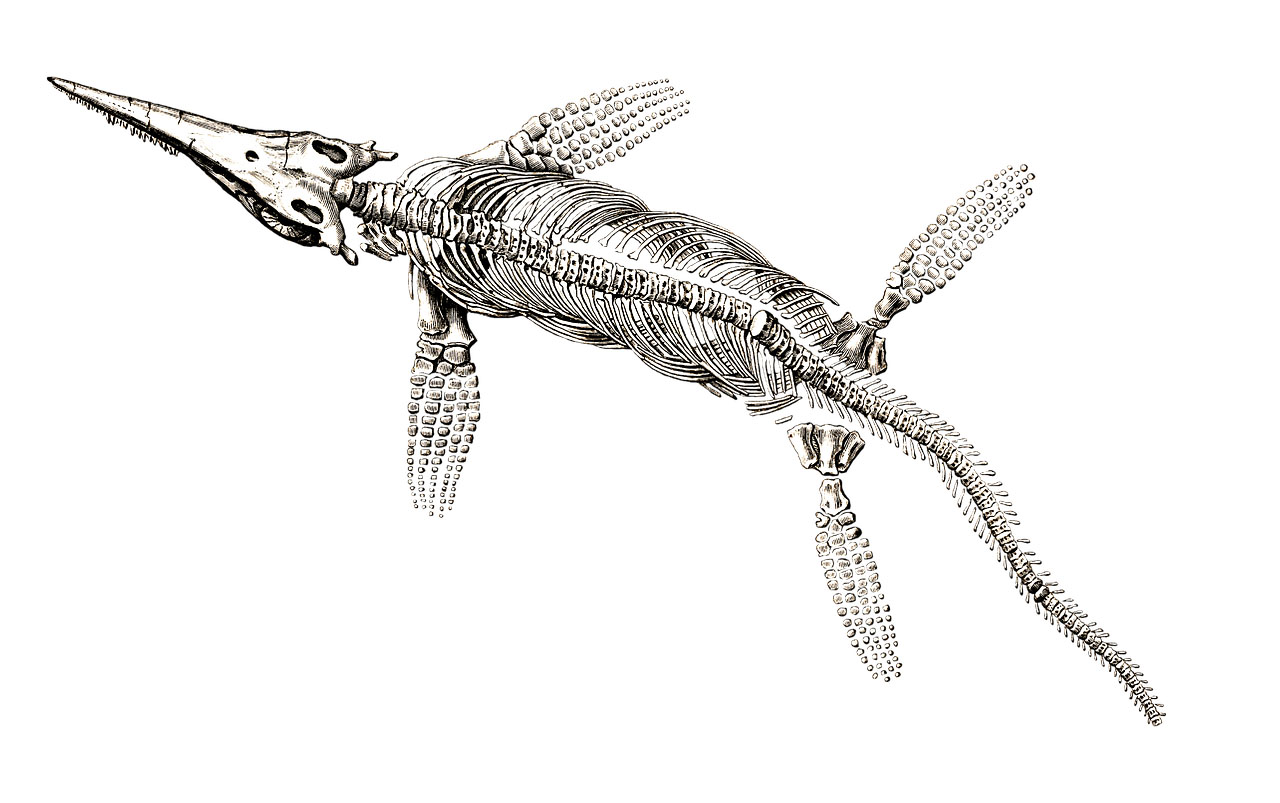
< Back
icthyosaurus
Definition
Ichthyosaurs were marine reptiles that lived during the Mesozoic era, which is also known as the Age of Dinosaurs. They were very similar to dolphins and whales, and they were the dominant marine predators of their time.
Ichthyosaurs had streamlined bodies with flippers instead of legs. They also had large eyes that helped them to see in the dark. Their nostrils were located on top of their heads, which allowed them to breathe while swimming upside down. Ichthyosaurs had a number of adaptations that made them well-suited for life in the water. Their streamlined bodies allowed them to swim quickly, their flippers helped them to steer and manoeuvre, and their large eyes allowed them to see in low-light conditions.
Ichthyosaurs were very successful animals. They lived all over the world, and they thrived for millions of years. However, they went extinct along with the dinosaurs at the end of the Cretaceous period. There are many different theories about why ichthyosaurs went extinct, but the most likely explanation is that they were unable to adapt to the changing climate at the end of the Cretaceous period.
Ichthyosaurs are fascinating creatures that we still have much to learn about. Their study can help us to better understand the evolution of marine reptiles and the Mesozoic era.
How can the word be used?
The diet of ichthyosaurians consisted of fish, squid, and other marine animals.

Different forms of the word
Noun: Ichthyosaurus is a type of extinct marine reptile that lived during the Mesozoic era. It is characterised by its long, streamlined body, flippers, and dorsal fin.
Adjective: Ichthyosaurian means "relating to or resembling an ichthyosaurus". For example, an ichthyosaurian skeleton is one that belonged to an ichthyosaurus.
Etymology
The word "ichthyosaurus" comes from the Greek words "ichthys" (fish) and "sauros" (lizard). It was first used in English in the early 19th century to refer to a type of extinct marine reptile that had a fish-like body.
Question
Describe an icthyosaurus.
AQA Science Exam Question and Answer
Question:
Explain the significance of Ichthyosaurs in the study of palaeontology, detailing their unique characteristics and adaptations that allowed them to thrive in ancient marine environments, and discuss how their fossils provide valuable insights into the evolution and diversity of marine life during the Mesozoic Era.
Answer:
Ichthyosaurs were ancient marine reptiles that played a significant role in the evolution of marine ecosystems during the Mesozoic Era. Their fossils provide crucial insights into the prehistoric world and the adaptations that enabled them to thrive.
Ichthyosaurs were well-adapted to aquatic life, possessing streamlined bodies, paddle-like limbs, and a tail fin for efficient swimming. They gave birth to live young at sea, avoiding the need to return to land for reproduction. Their unique features, such as the ability to regulate body temperature and a specialised eye structure for deep-sea hunting, make them fascinating subjects of paleontological study.
The study of Ichthyosaur fossils has contributed to our understanding of ancient marine environments, predator-prey relationships, and the overall diversity of Mesozoic marine life. By analysing their anatomical features and distribution, scientists can infer details about their behaviour, diet, and ecological niches.
In conclusion, Ichthyosaurs hold a vital place in the study of palaeontology, offering insights into the evolution of marine life and the adaptations that allowed these reptiles to thrive in ancient oceans. Their fossils provide a glimpse into the dynamic and diverse ecosystems of the past, enriching our understanding of Earth's history and the complex interactions between species.